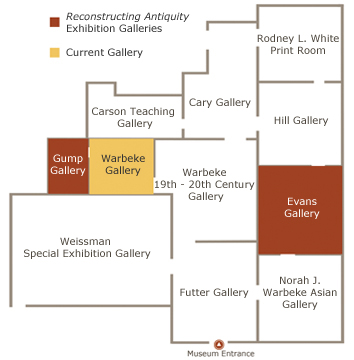Winged female, Eos, pursuing a youth (Tithonos or Kephalos)
Learn more about the object below
The Greek goddess Eos (Dawn) is known for her erotic pursuit of two different mortal men: Tithonus (the Trojan son of King Laomedon), who is sometimes depicted with a lyre in hand, and Kephalos, whom she captured while he was hunting. Eos asked Zeus to grant Tithonus immortality so that they could live together happily ever after on Olympus, but she forgot to ask for eternal youth for her lover. So,
when hateful old age weighed him down completely so that he could neither move nor lift his limbs, then this was the plan that seemed best in her heart: she laid him in a chamber shut its shining doors. His voice flows on endlessly, but the strength has gone which once was his when his limbs were supple. (Homeric Hymn to Aphrodite, 233-37, translated by Jules Cashford).
A recently discovered papyrus manuscript containing verses of Sappho’s poetry confirms that aging and loss of physical beauty were deep preoccupations of the poet and her contemporaries, and that Tithonus was a poster boy for the transience of youthful good looks. In the “Tithonus Poem” he exemplifies the ravages of time on the human body:
…skin once soft is withered now, [several words missing] hair has turned white which once was black, my heart has been weighed down, my knees, which once were swift to dance like young fawns, fail me. How often I lament these things. But what can you do? No being that is human can escape old age. For people used to think that Dawn with rosy arms [several words uncertain) Tithonus fine and young to the edges of the earth; yet still grey old age in time did seize him, though he has a deathless wife. (Sappho, Fr. 58, “The Tithonus Poem,” translated by Dirk Obbink, in The New Sappho on Old Age: Textual and Philosophical Issues, ed. E. Greene and M.B. Skinner, CHS Press, 2009.)
Label text by Melissa Mueller, Assistant Professor, Classics Department, University of Massachusetts, Amherst



